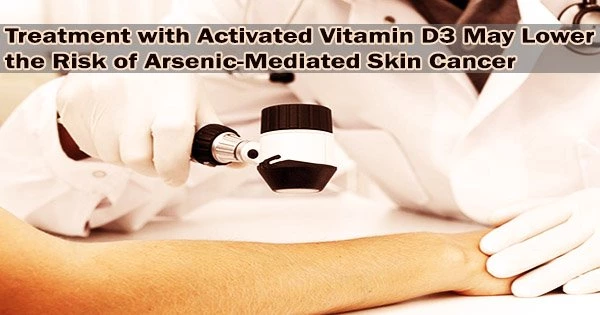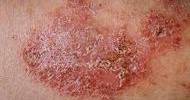Water that contains arsenic is regularly consumed by millions of people worldwide. Arsenic exposure has previously been linked to the occurrence of several malignancies, including skin cancer.
There is still a dearth of knowledge regarding the underlying molecular processes controlling arsenic-mediated carcinogenesis. Researchers from Japan use in vitro tests to show how calcitriol, or activated vitamin D3, prevents arsenic-mediated carcinogenesis in specific skin cell types known as “keratinocytes.”
More than 140 million individuals from 50 different nations are reportedly constantly exposed to arsenic through drinking water. The exposure level significantly exceeds the guideline value (10 μg/L) stipulated by the World Health Organization (WHO). It is well known that drinking water arsenic exposure over time promotes a number of malignancies, including skin cancer.
Sadly, there is a general lack of information on the biological processes that control arsenic-mediated carcinogenesis. Furthermore, there are currently no effective preventative measures or therapies for arsenic-mediated carcinogenesis.
The biological principles underpinning the inhibition of carcinogenesis have recently been discovered by scientists at Nagoya University and Shibaura Institute of Technology (SIT).
The study group has been able to show how calcitriol, or activated vitamin D3, suppresses arsenic-mediated carcinogenesis in particular types of skin cells known as “keratinocytes” through in vitro tests. The epidermis, the skin’s top layer, is where these cells are primarily found.
It is a well-known fact in science that the formation of tumors is closely related to the fate of specific signaling molecules kinase proteins, such as MEK or “AKT,” that control a variety of biological processes.
Professor Ichiro Yajima from the Unit of Molecular and Cellular Toxicology, Department of Bioscience and Engineering, SIT, who led the research team, says, “Our in vitro study in human nontumorigenic HaCaT skin keratinocytes showed that calcitriol, which is also known as activated vitamin D3 or 1,25-dihydroxy-vitamin D3, inhibited arsenic-mediated anchorage-independent growth with downregulations of cancer-related activation of several signaling pathways, including MEK, ERK1/2, and AKT, as well as activity of cell cycle.”
These results suggest that calcitriol suppresses arsenic-induced tumorigenesis not only in keratinocytes, but also in other target cells including lung epithelial cells. Furthermore, the expression pattern of aquaporin genes involved in arsenic uptake, a critical step in arsenic-induced carcinogenesis, is significantly altered by calcitriol treatment. We therefore believe that activated vitamin D3, or calcitriol, may contribute to the prevention and therapy for arsenic-mediated diseases including cancer.
Professor Ichiro Yajima
The researchers used an inductively coupled plasma-mass spectrophotometer to measure the arsenic levels in HaCaT cells, which are long-lived, spontaneously immortalized human epidermal keratinocytes that were treated with calcitriol in order to clarify the relationship between arsenic uptake and calcitriol treatment.
It’s interesting to note that when HaCaT cells exposed to escalating dosages of calcitriol, their arsenic levels drastically dropped. The American Journal of Cancer Research has published the results of its investigation.
Dr. Masashi Kato, who serves as a Professor at the Department of Occupational and Environmental Health, Nagoya University, Japan, and is a collaborator on the study, adds, “Calcitriol significantly repressed arsenic uptake in HaCaT cells with the regulation of expressions of aquaporin genes (AQP7, 9, and 10), which were modified by arsenic exposure. Vitamin D receptor expression was significantly increased by arsenic exposure whereas calcitriol had no effect on the expression of the receptor.”
The next step was to determine whether cells other than skin keratinocytes were also susceptible to arsenic-induced cancer. To do this, they used the “Beas-2b” human normal lung epithelial cell line in anchorage-independent growth tests.
These tests produced equally astounding results: arsenic-mediated anchorage-independent development of Beas-2b cells treated with calcitriol was inhibited by 21.4-70.0%, indicating that calcitriol’s ability to inhibit arsenic-induced carcinogenesis is not limited to keratinocytes.
Prof. Yajima muses, “These results suggest that calcitriol suppresses arsenic-induced tumorigenesis not only in keratinocytes, but also in other target cells including lung epithelial cells. Furthermore, the expression pattern of aquaporin genes involved in arsenic uptake, a critical step in arsenic-induced carcinogenesis, is significantly altered by calcitriol treatment. We therefore believe that activated vitamin D3, or calcitriol, may contribute to the prevention and therapy for arsenic-mediated diseases including cancer.”
Arsenic and other environmental pollutants play a crucial role in the emergence of deadly conditions like cancer. Cancer, however, may not manifest for years or even decades after consuming arsenic-contaminated water.
According to current research, activated vitamin D3 and/or its analogs could be utilized as a test substance to verify their safety and effectiveness in preventing or treating arsenic-triggered cancer.
In arsenic-contaminated locations, taking vitamin D3 beforehand may lower the risk of developing cancer five to ten years later and aid in long-term health maintenance. For the millions of people who must rely on contaminated water to survive, this is undoubtedly good news.
















